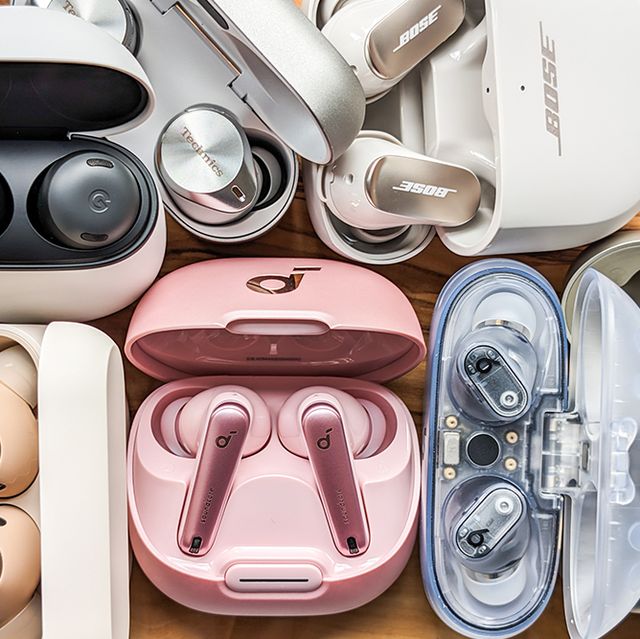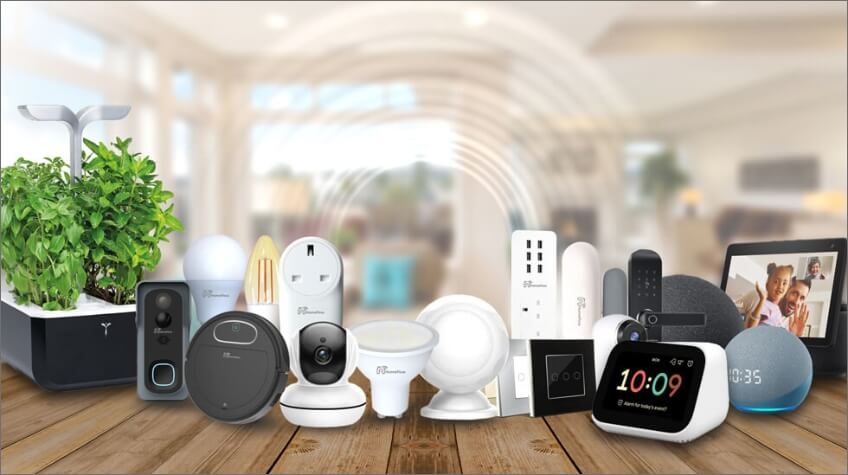
Navigating the Android Ecosystem: From Breaking News to the Best Phones and Gadgets
The Ultimate Guide to the Ever-Changing World of Android
The Android ecosystem is a vast and perpetually evolving universe. For the casual observer, it can feel like a chaotic whirlwind of version numbers, processor names, and an endless stream of new devices. For the enthusiast, it’s a dynamic landscape of innovation, customization, and choice. From the constant flow of Android news detailing the next big software update to the dizzying array of Android phones vying for your attention, and the ever-expanding universe of interconnected Android gadgets, staying informed is more than a hobby—it’s a necessity for making smart decisions. This guide is designed to be your comprehensive map to this world. We will demystify the core components of the Android experience, break down what truly matters when choosing a device, explore the exciting peripherals that enhance your digital life, and provide actionable insights to help you become a more empowered Android user. Whether you’re considering your next smartphone purchase or simply want to understand the technology that powers your daily life, this article will equip you with the knowledge you need to navigate the Android ecosystem with confidence.
Section 1: The Ever-Evolving Android Ecosystem: More Than Just an OS
To truly understand Android, one must look beyond the green robot mascot. At its core, Android is a powerful, Linux-based open-source operating system that has become the foundation for a global technology movement. Its flexibility and open nature are the primary reasons for its dominance and the incredible diversity we see in the market today. This section breaks down the foundational pillars that make the Android world tick.
The Power of Open Source and Manufacturer Skins
The heart of the platform is the Android Open Source Project (AOSP). Google maintains and develops this core code, making it freely available to any manufacturer. This is why companies like Samsung, Xiaomi, OnePlus, and countless others can build their own unique smartphones. However, they don’t just use the stock version of Android. Instead, they build proprietary “skins” or user interfaces (UIs) on top of AOSP. For example:
- Samsung’s One UI: Known for its feature-rich environment, deep customization options, and unique integrations like DeX, which provides a desktop-like experience.
- Google’s Pixel UI: This is the “purest” Android experience, offering a clean, intuitive interface with exclusive AI-powered features and the fastest access to new updates.
- OnePlus’s OxygenOS: Historically praised by enthusiasts for its blend of stock-like speed and thoughtful, non-intrusive customizations.
This diversity is Android’s greatest strength and, at times, its biggest challenge. It fosters competition and innovation but can also lead to fragmentation, where different devices run different versions of the OS with varying features.

Staying Current: Why Android News Matters
The constant evolution of the platform makes following Android news crucial for any user. This news isn’t just about flashy new hardware; it directly impacts your device’s security, functionality, and longevity. Key areas to watch include:
- Major OS Updates: The annual release (e.g., from Android 14 to Android 15) brings significant new features, privacy enhancements, and UI changes.
- Security Patches: Google releases monthly security updates to patch vulnerabilities. How quickly and for how long a manufacturer delivers these patches is a critical measure of their commitment to user safety.
- Feature Drops: A practice popularized by Google, these are quarterly updates that bring new functionalities to Pixel phones outside of the major OS release cycle, keeping the devices fresh and exciting.
- Hardware Leaks and Announcements: Following news about upcoming devices can help you make a better purchasing decision, preventing you from buying a phone right before its successor is announced with major upgrades.
Section 2: Decoding Android Phones: A Buyer’s Guide to the Modern Device
Choosing from the vast sea of Android phones can be overwhelming. Manufacturers bombard consumers with technical jargon and impressive-sounding numbers. However, understanding a few key components can empower you to see past the marketing hype and select a phone that truly meets your needs. This section provides a detailed analysis of what really matters in a modern smartphone.
Beyond the Hype: Understanding Core Specifications
A phone’s spec sheet tells a story, but you need to know how to read it. Here’s a breakdown of the most important components:
- System on a Chip (SoC): This is the brain and heart of the phone, combining the CPU, GPU (for graphics), and other essential processors. The main players are Qualcomm’s Snapdragon series (known for raw performance and efficiency), Google’s Tensor chips (designed with a focus on AI and machine learning for features like camera processing and real-time translation), and MediaTek’s Dimensity series (offering competitive performance, often at a better price point). For a flagship experience, a top-tier chip like the Snapdragon 8 Gen 3 is a benchmark, while a mid-range chip like the Snapdragon 7-series or a recent Tensor G3 offers excellent performance for most users.
- RAM and Storage: Think of RAM as the phone’s short-term memory for multitasking. In 2024, 8GB is the standard for smooth performance, while 12GB or more is ideal for power users and future-proofing. For storage, look for UFS 3.1 or UFS 4.0 technology, which ensures fast app loading and file transfer speeds. 128GB is a minimum starting point, with 256GB being the sweet spot for most.
- Display Technology: An AMOLED (or OLED) screen is a must-have for vibrant colors and true blacks. The key differentiator today is the refresh rate. A 120Hz or higher refresh rate makes scrolling and animations feel incredibly smooth. LTPO (Low-Temperature Polycrystalline Oxide) is an advanced technology that allows the refresh rate to dynamically adjust (e.g., from 1Hz to 120Hz), saving battery life. Also, pay attention to peak brightness (measured in nits); a higher number (1500+ nits) means the screen is easier to see in direct sunlight.
- Camera Systems: Ignore the “megapixel myth.” A 108MP camera isn’t inherently better than a 12MP one. The most critical factors are the main sensor’s physical size (larger is better), the lens’s aperture (a lower f-number like f/1.7 lets in more light), and, most importantly, the software processing. This is where a real-world case study comes in: Google’s Pixel phones often produce superior photos with a modest 50MP sensor due to their world-class computational photography, while Samsung’s Galaxy S Ultra series excels by offering incredible hardware versatility with multiple telephoto lenses for unparalleled zoom capabilities.
Section 3: Beyond the Phone: The Expanding Universe of Android Gadgets
The Android experience no longer begins and ends with your smartphone. A rich and interconnected ecosystem of Android gadgets has emerged, designed to integrate seamlessly into your life. These devices leverage the power and connectivity of your phone to offer new conveniences, track your health, and control your environment. This section explores the most significant categories in this expanding universe.
The Wearable Revolution: Smartwatches and Earbuds

Wearables are the most personal of all Android gadgets, acting as direct extensions of your phone.
Smartwatches, powered by Google’s Wear OS, have matured into powerful tools. The Samsung Galaxy Watch series and Google’s own Pixel Watch 2 are prime examples. They offer deep integration for notifications, allowing you to reply to messages and answer calls from your wrist. They are also comprehensive health trackers, monitoring heart rate, sleep patterns, blood oxygen levels, and even offering ECG capabilities. The synergy is key; your watch and phone work together, sharing data and enhancing each other’s functionality.
Wireless Earbuds have become equally essential. Thanks to features like Google Fast Pair, connecting new buds to your phone is a one-tap process. Advanced features like multipoint Bluetooth allow you to be connected to your laptop and phone simultaneously, seamlessly switching audio for a video call or an incoming phone call. Brands like Sony, Samsung, and Google push the envelope with active noise cancellation (ANC) and spatial audio, creating immersive listening experiences that are tightly integrated with the Android OS.
The Connected Home and the Rise of Matter
Your Android phone is the ultimate remote control for your smart home. Through the Google Home app, you can manage a vast array of connected devices, from smart lights and thermostats to security cameras and smart speakers. A real-world scenario illustrates this power: you can create a “Good Morning” routine that, when you dismiss your phone’s alarm, automatically triggers your smart blinds to open, your thermostat to adjust to your preferred temperature, and your Nest Hub to start playing your favorite news podcast. The recent adoption of the Matter standard is a game-changer. It’s a universal connectivity protocol that ensures devices from different manufacturers (like Apple, Amazon, and Google) can all work together, breaking down walled gardens and making it easier than ever to build a cohesive smart home controlled from your Android device.
Section 4: Navigating the Android World: Best Practices and Pitfalls
Being an informed consumer in the Android ecosystem means adopting a strategic approach. It involves understanding what to prioritize, what to ignore, and how to make choices that will serve you well in the long term. This section provides actionable recommendations and highlights common mistakes to help you navigate the landscape like a pro.
Actionable Tips for the Savvy Consumer
To make the best choices, focus on these best practices:
- Prioritize Software Support Above All: A phone’s hardware is only as good as the software running on it. The single most important, yet often overlooked, specification is the manufacturer’s update promise. Google and Samsung are currently leading the industry by offering up to seven years of OS and security updates for their flagship devices. This guarantees your expensive investment remains secure, functional, and receives new features for years to come, dramatically increasing its value and lifespan.
- Look Beyond the Spec Sheet for User Experience: Don’t get caught in the numbers game. A phone with 16GB of RAM but poorly optimized software can feel slower than a phone with 8GB of well-tuned software. Read and watch reviews from trusted sources that focus on real-world performance, battery life, camera quality in various conditions, and the overall feel of the user interface.
- Curate Your Android News Sources: The internet is full of clickbait and misinformation. Follow reputable technology publications that provide in-depth analysis rather than just repeating rumors. A curated feed of reliable Android news will keep you informed about important security updates and meaningful hardware innovations, helping you tune out the noise.
Common Pitfalls to Avoid
Steer clear of these common traps:
- The “Newest is Always Best” Fallacy: A brand-new mid-range phone is not always a better purchase than a one-year-old flagship. Often, the older flagship will still have a superior processor, a better camera system, and more premium build quality. If it’s still within its software support window, it can offer far better value for your money.
- Ignoring the Ecosystem Lock-in: Before buying a new phone or gadget, consider your existing devices. If you own a Samsung watch and earbuds, a new Samsung phone will offer the most seamless experience through the Galaxy Wearable app. While cross-brand compatibility has improved, staying within an ecosystem often unlocks exclusive features and a more frictionless user experience.
Conclusion: Your Place in the Android Universe
The world of Android is one of incredible choice and constant innovation. It’s a platform defined by its diversity, from the clean and intelligent software on a Google Pixel to the feature-packed powerhouse of a Samsung Galaxy. We’ve journeyed from the foundational importance of its open-source nature to the critical details that define great Android phones. We’ve also explored how the ecosystem extends far beyond the pocket, with a universe of Android gadgets that enrich our health, homes, and daily routines. The key takeaway is that empowerment comes from knowledge. By staying informed with reliable Android news, understanding what specifications truly matter, and thinking about your technology as a cohesive ecosystem, you can move from being a passive consumer to an active, informed user. The future of Android is personal, interconnected, and intelligent, and now you have the tools to make it work best for you.



